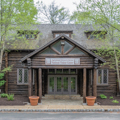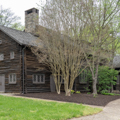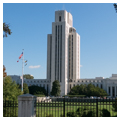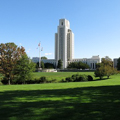From the moment of its founding in 1790, the District of Columbia changed its Maryland neighbors. The federal city was created from Maryland and Virginia property ten miles square on either side of the Potomac River. In 1846 the Virginia portion, including Alexandria, retroceded to the Commonwealth, leaving only the original Maryland territory to accommodate the national capital.
During the early nineteenth century Washington grew slowly, and even the close-by Maryland jurisdictions remained economically and socially distinct. Tremendous growth during the Civil War and its aftermath changed all that, particularly following the Pendleton Act of 1883, which mandated merit-based civil service rather than political spoils. The U.S. government also became a major employer of African Americans in a time of segregation. Development in the adjacent Maryland suburbs was increasing driven by federal jobs and the availability of transportation such as railroads and streetcars.
As the designated federal city became more densely developed, federal agencies seeking space began moving out into Maryland and Virginia. An early example was the Department of Agriculture, which needed land for experimental fields and greenhouses as its mission was expanded at the turn of the twentieth century. New Deal expansion of the federal government both increased the demand for residential development and funded construction of new federal facilities in the greater capital region. The Beltsville Agricultural Research Center was expanded, and the Bethesda vicinity of Montgomery County saw the establishment of Bethesda Naval Hospital, the new National Institutes of Health headquarters (1940), and the David Taylor Model Basin, an innovative naval ship testing facility built in 1938. World War II accelerated these trends, as housing and office space strained to accommodate the increased needs. Most famously, the Pentagon was constructed for the Department of Defense in Virginia, but all the Maryland military and civilian installations saw wartime expansion.
Threat of nuclear attack after the first Russian atomic bomb test in 1949 increased interest in decentralizing the operations of the federal government to reduce the value of Washington as a target and provide continuity of operations. Major new government campuses included the White Oak Naval Surface Warfare Center in Silver Spring (1954), the Atomic Energy Commission in Germantown (1957), NASA Goddard Space Flight Center in Greenbelt (1961), and the National Bureau of Standards in Gaithersburg (1966). Reaching farther into the Maryland hinterland required new road construction such as the Capital Beltway (I-495, completed 1964), and I-270 through Montgomery County, which emerged as a high-tech corridor for the military industrial complex.
Writing Credits
If SAH Archipedia has been useful to you, please consider supporting it.
SAH Archipedia tells the story of the United States through its buildings, landscapes, and cities. This freely available resource empowers the public with authoritative knowledge that deepens their understanding and appreciation of the built environment. But the Society of Architectural Historians, which created SAH Archipedia with University of Virginia Press, needs your support to maintain the high-caliber research, writing, photography, cartography, editing, design, and programming that make SAH Archipedia a trusted online resource available to all who value the history of place, heritage tourism, and learning.







